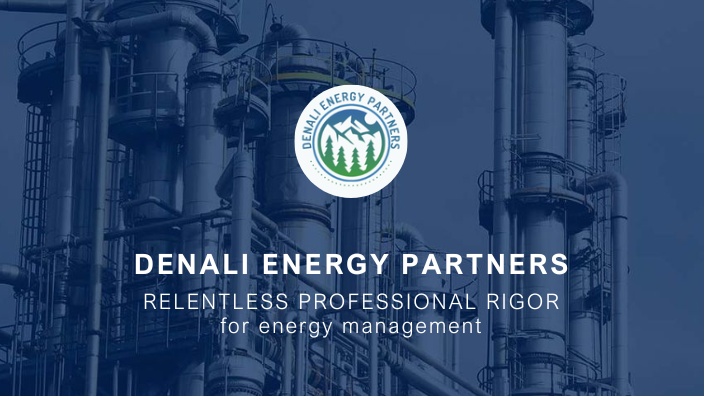How to Diversify Energy Sources as a Key Strategy for Your Industrial Park
Denali-ep
| 17 de octubre de 2024
How to Diversify Energy Sources as a Key Strategy for Your Industrial Park
In today's world, where stability and sustainability are essential, diversifying energy sources has become a critical strategy for industrial parks. This article explores how and why diversifying energy sources can benefit your industrial park, helping you minimize risks, reduce costs, and increase operational resilience.
Importance of Energy Diversification
Risk Reduction
Diversifying energy sources allows industrial parks to reduce dependency on a single type of energy, thereby minimizing risks related to price fluctuations and limited availability.
Improved Operational Resilience
Having multiple energy sources ensures that operations are not disrupted by issues with a specific supply, increasing the stability and reliability of your industrial park.
Economic Benefits of Diversification
Cost Optimization
By leveraging different energy sources at different times, diversification can help optimize operational costs, reducing the overall energy expenditure.
Incentives and Credits
Some renewable energy sources come with tax incentives and credits that can be financially beneficial for your industrial park.
Renewable and Non-Renewable Energy Sources
Solar Energy
Solar energy is a growing renewable option. Industrial parks can benefit from installing solar panels to generate sustainable electricity.
Wind Energy
Wind energy is another renewable option, particularly effective in regions with strong winds. Wind turbines can provide a significant portion of the necessary energy.
Biomass Energy
Biomass energy uses organic materials to generate power. It is a sustainable option that can complement other energy sources in your industrial park.
Hydroelectric Energy
If there is access to water bodies, hydroelectric power can be a continuous and effective way to generate electricity.
Geothermal Energy
Geothermal energy utilizes heat from the Earth to produce electricity. It is a viable option for industrial parks located in geothermal zones.
Nuclear Energy
While less common due to safety and waste concerns, nuclear energy can offer a stable energy supply for industrial parks aiming to minimize their carbon footprint.
Implementing Energy Diversification Strategies
Assessing Energy Needs
Before diversifying, it's crucial to evaluate the specific energy needs of your industrial park to determine which energy sources to implement.
Feasibility Studies
Conduct feasibility studies for each energy source, considering factors like costs, availability, and environmental benefits.
Installation and Maintenance
The installation of new energy sources should be done by qualified professionals, and regular maintenance is essential to ensure efficiency.

Success Stories
European Industrial Park
A European industrial park has successfully implemented a mix of solar and wind energy, reducing energy costs by 30% and improving sustainability.
North American Industrial Park
In North America, an industrial park has utilized biomass and geothermal energy, decreasing its reliance on fossil fuels and benefiting from significant tax incentives.
Challenges and Considerations
Initial Costs
Diversifying energy sources may require a significant upfront investment. However, the long-term benefits often outweigh these initial costs.
Infrastructure and Logistics
Implementing new energy sources may require changes to the existing infrastructure and adjustments in operational logistics.
Regulations and Compliance
It’s essential to comply with local regulations and standards regarding energy generation and usage to avoid penalties and legal issues.
Future Trends in Energy Diversification
Technological Advances
Technological advancements are making renewable energy sources more accessible and efficient. Staying updated on the latest innovations can help you take advantage of the best opportunities.
Policies and Regulations
Government policies and evolving regulations can influence the feasibility and profitability of different energy sources. Make sure to stay informed on current regulations.
Conclusion
Diversifying energy sources is a crucial strategy for industrial parks aiming to increase resilience, reduce costs, and promote sustainability. Combining renewable and non-renewable energy sources, along with careful planning and effective implementation, can transform your industrial park into a model of efficiency and sustainability.
Why is energy diversification important for industrial parks?
Energy diversification helps industrial parks reduce dependency on a single energy source, minimizing risks related to price fluctuations and supply shortages. It also enhances operational resilience by ensuring a continuous power supply from various sources.
What are the main benefits of diversifying energy sources?
Key benefits include cost optimization, improved energy security, access to renewable energy incentives, and reduced environmental impact. Diversifying energy also makes industrial parks more resilient to disruptions in a single energy supply.
What types of energy sources are suitable for industrial parks?
Both renewable (solar, wind, biomass, hydroelectric, and geothermal) and non-renewable (nuclear, natural gas) energy sources can be utilized. The choice depends on factors like location, cost, and energy needs.
What challenges should industrial parks expect when diversifying energy sources?
Initial costs for installation and infrastructure modifications can be significant. Additionally, there may be logistical challenges and regulatory requirements to comply with, making proper planning and expert consultation crucial.
How can an industrial park start the energy diversification process?
Begin by assessing the park’s energy needs and conducting feasibility studies for different energy sources. Then, implement the chosen energy solutions with professional installation and ensure regular maintenance for optimal performance.




